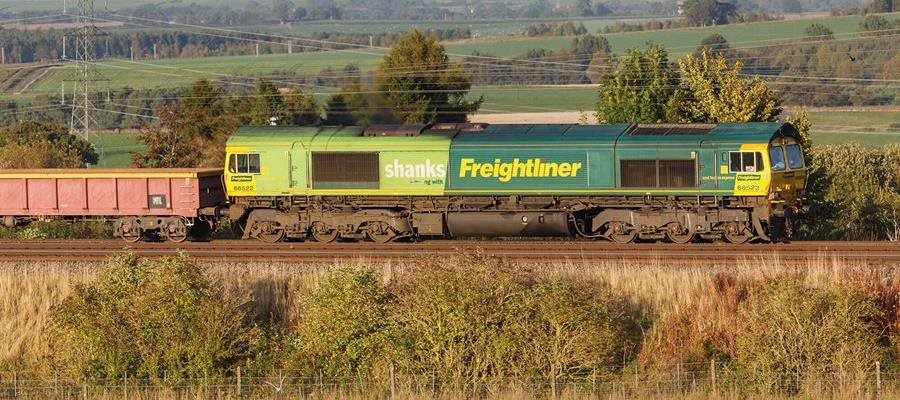🕒 Article read time: 10 minutes
Decarbonising rail

To say that the government’s target to achieve net zero carbon emissions by 2050 is bold in its ambition would risk being accused of classic British understatement. However, with transport currently accounting for more than a quarter of the UK’s greenhouse gas emissions, the industry must play its part in helping to achieve this incredibly challenging target.
MULTIMODAL SOLUTIONS
While thoughts immediately turn to the fleet of diesel-powered HGVs thundering along our motorways, the contribution of non-road transport to the UK’s emissions is also significant. Arguably, out of the four main modes – road, rail, air and sea – rail is the simplest to decarbonise. In short, Britain’s railways can be decarbonised if the government chooses to do so and makes funds available to establish the infrastructure. There is a practical means to achieve it, through electrification of the rail network, combined with electricity generation through renewable sources.
MORE FREIGHT, FEWER EMISSIONS
However, it is important to remember that even when goods are moved using diesel locomotives, this saves 76% carbon per freight tonne mile compared to conveying the same volume of goods via road. Electric freight trains produce 60% fewer carbon emissions than diesel trains and their use could therefore result in a staggering 90% carbon saving per freight tonne mile, compared to road.
THE CASE FOR ELECTRIFICATION
In FTA’s view, electrification is the most viable solution for reducing rail emissions, particularly for freight, if the sector is to meet the government’s decarbonisation targets. Electric freight trains are an established technology already in use on key stretches of railway. Currently, around 10% of rail freight is electrically hauled, principally on the West Coast Main Line. And unlike other technical solutions for rail or road freight which are, in FTA’s opinion, decades away, electric freight trains could be quickly implemented to deliver significant carbon savings in just a couple of years. While the debate around the electrification of the UK’s road fleet rumbles on, technically speaking, rail electrification is a feasible solution today. The UK has been lagging behind European railways on this for years. Mainly the challenges are around cost: recent electrification schemes have been cancelled due to cost overruns.
STRATEGIC SOLUTION
Currently, 42% of the UK rail network is electrified: however, there are some small gaps within this electrified network that, if addressed, would join other routes up and immediately support an increase in the use of electric traction. For example, around ten diesel trains a day travelling between London Gateway, the Midlands and the North West could transition to electric if the 1.5-mile branch line linking this route became electrified. In FTA’s opinion, while there is a vital need for a coherent long-term strategy to electrify the entire network, there is also a strong case for quick development and implementation of electrification for such gaps. Doing so will, in FTA’s view, create momentum towards decarbonisation and give confidence to private sector operators and their funders to support development of new hybrid and electric designs of locomotives. This is particularly relevant as freight operators start to procure new locomotives to support growth, in addition to planning replacements for their existing diesel fleets that are now approximately half-way through their life cycle.
INFRASTRUCTURE INVESTMENT
As mentioned earlier, the UK is falling behind with electrification when compared to EU-27 countries: on average, 54% of European rail networks are electrified. FTA believes this is due to the high costs of building the infrastructure required; many recent electrification schemes have been cancelled as a result of overrunning costs. However, The Railway Industry Association (RIA) recently challenged the excessive costs that have been paid to electrify UK rail networks. In its report from 2019, RIA argued that, should the government commit to a structured rolling programme of work, rail electrification could be delivered at between a third and a half of the cost of some previous projects. And further work by FTA members and the RIA concluded that the rail freight sector could be two-thirds electrified by 2033 if the government carries out the suggested ‘infill’ approach; electrifying strategic parts of the network in a staged way.
PROMISING PROPOSALS
Encouragingly, routes such as the TransPennine corridor and Midland Main Line are already being considered for electrification. These are crucial corridors for freight movements, and it is vital that government considers the use of electric freight trains within future electrification strategies; however, FTA believes this will need an audit and plan to ensure there is sufficient power supply for both freight and passenger services.
DECARBONISING ENERGY
With the road transport sector also under growing pressure to electrify, the demand for electric power will inevitably increase. Therefore it is necessary to assess the decarbonisation of the power sector, if the government’s aim of net-zero emissions by 2050 is to be accomplished. Decarbonising national power can be achieved by using low-carbon energy sources such as renewables and reducing the use of fossil fuels. Renewables, including tidal, wind and solar, now produce a third of power capacity worldwide.
Assuming national power generation will be decarbonised in the coming years, electric freight trains would produce zero carbon and therefore remain, for the foreseeable future, the optimal carbon zero technical solution for the carriage of freight. Added to which, faster acceleration, improved reliability and the ability to maintain higher average speeds, can help reduce network capacity usage.
GOVERNMENT BACKING IS CRITICAL
FTA’s view is that now is the ideal time for the government to develop a comprehensive plan. While the rail freight sector is committed to carbon reduction, government support and direction is critical. FTA will continue liaising with government to advise on realistic and efficient strategies, to ensure that the ambitious target of net zero greenhouse gas emissions by 2050 can be achieved.
★www.fta.co.uk/rail
Published On: 01/04/2020 10:53:21

Comments Section
If you are a Logistics UK member login to add comments.